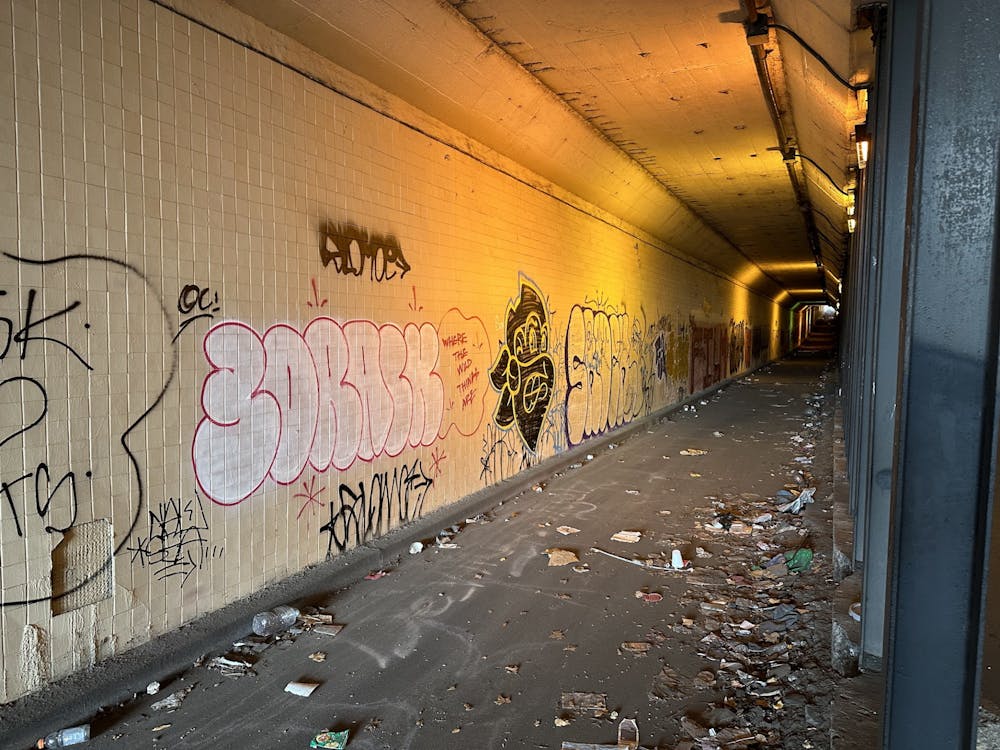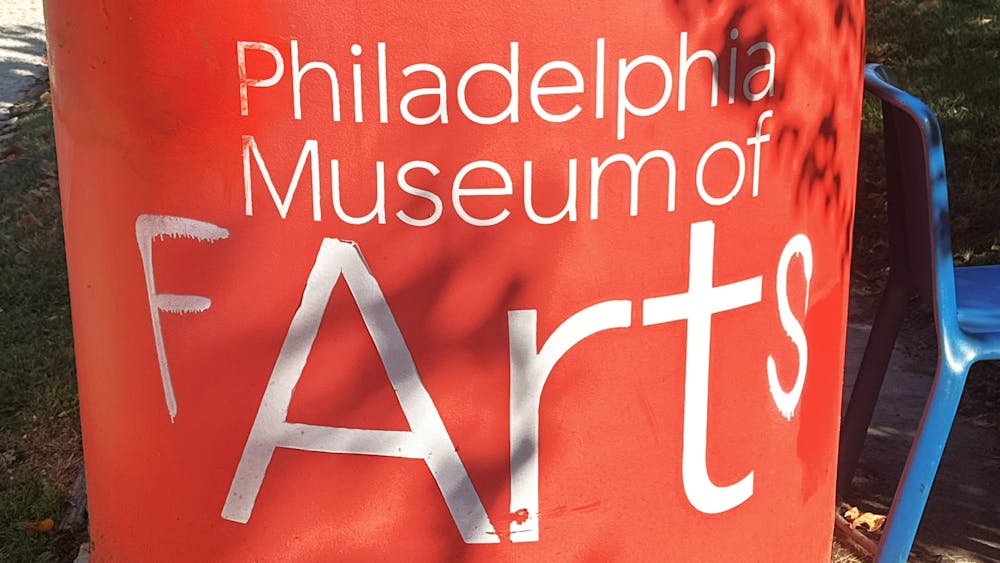In 1967, Darryl “Cornbread” McCray had a crush. Many modern teenagers would meander endlessly through a tedious talking stage that takes months to see through, but Cornbread had some gargantuan balls. Using a can of spray paint, he began tagging “CORNBREAD LOVES CYNTHIA” around the streets of Philadelphia as a vehicle for his intense feelings. McCray didn’t know it then, his public display of puppy love would be the predecessor for the modern graffiti movement of the likes of Basquiat and Banksy.
Today, McCray has since given up tagging the streets, but many continue his legacy to prop up Philadelphia’s title as the “Mural Capital of the World.” Yet, despite the city’s role as the birthplace of the art form, street art lacks a place in the Philadelphia Museum of Art. Well, indoors, that is. If you take a look outside, the nooks and crannies of the Greek Revival architecture are plastered with Rust-oleum.
For instance, muralists have taken a liking to the North and South ends of the museum due to copious amounts of vegetation that will keep their work from being detected. However, the South end contains an exposed wall where a single artist has flouted among the rest. As if to openly challenge the high–and–mighty art of the museum, our anonymous graffitist has placed two cheeky human–like faces on opposite sides of an ornate facade decorated by Greek sculpture and lettering. The resulting juxtaposition is comical, a visual dialogue between the worlds of “sacred” and “profane” art.

And just a few steps away, onlookers find the work of an artist I’ve dubbed Steve at the North Cliffside Path. Steve uses a particular shade of black paint so dark it absorbs the various textures of the sharp crags and the plants into a dark void. With this as his weapon of choice, Steve signs his name and grafts “FREE MICHAEL WES JOS TOVELOKE R.DOT” among other monikers onto the mossy rock. The lettering is in the '70s punk style associated with Stussy and The Sex Pistols, a common motif in graffiti.
Yet, the most impressive collection of graffiti at the museum is located on the Southwest end of the museum directly facing the Schuylkill. From its humble beginnings as a SEPTA trolley path, the Spring Garden tunnel is now a poorly maintained one–way road that’s filled with trash and flickering lights—a perfect breeding ground for street art. Although it’s probably the creepiest place I’ve ever stepped foot in, my anxiety fades as I gaze in awe at the paint–covered walls. Unbridled by the seclusion of the location, the artwork here is beautifully chaotic. The block letters of the throw–up lack structure, the color palette is almost Fauvist, and the jumbles of text don't hesitate to tower over the viewer as they go from one end of the tunnel to another. Some of my favorites among these works include a caricatured drawing of a man on fire that looks as if a Schiele self–portrait was high on copious amounts of weed.

However, the most exciting thing about all of this is that almost none of the work I just described will exist in a couple of weeks. Unlike various Picassos and Rubens stored just a few hundred feet away, the Philadelphia Museum of Art doesn’t conserve or restore any of the “vandalism” on their property, leaving it to the weather or government groundskeepers to clean it up. But the blank slate they’ll leave behind will give way to a fresh generation of graffiti, with each wave yielding to the birth of the new. This is what sets the genre apart. Unlike its museum counterparts, graffiti thrives on any form of decay—whether that be the North Cliffside Path, the Spring Garden Tunnel, or the fading ink of its forefathers. Who knows, maybe Steve’s tags are sitting on top of where Cornbread felt love for the first time.

